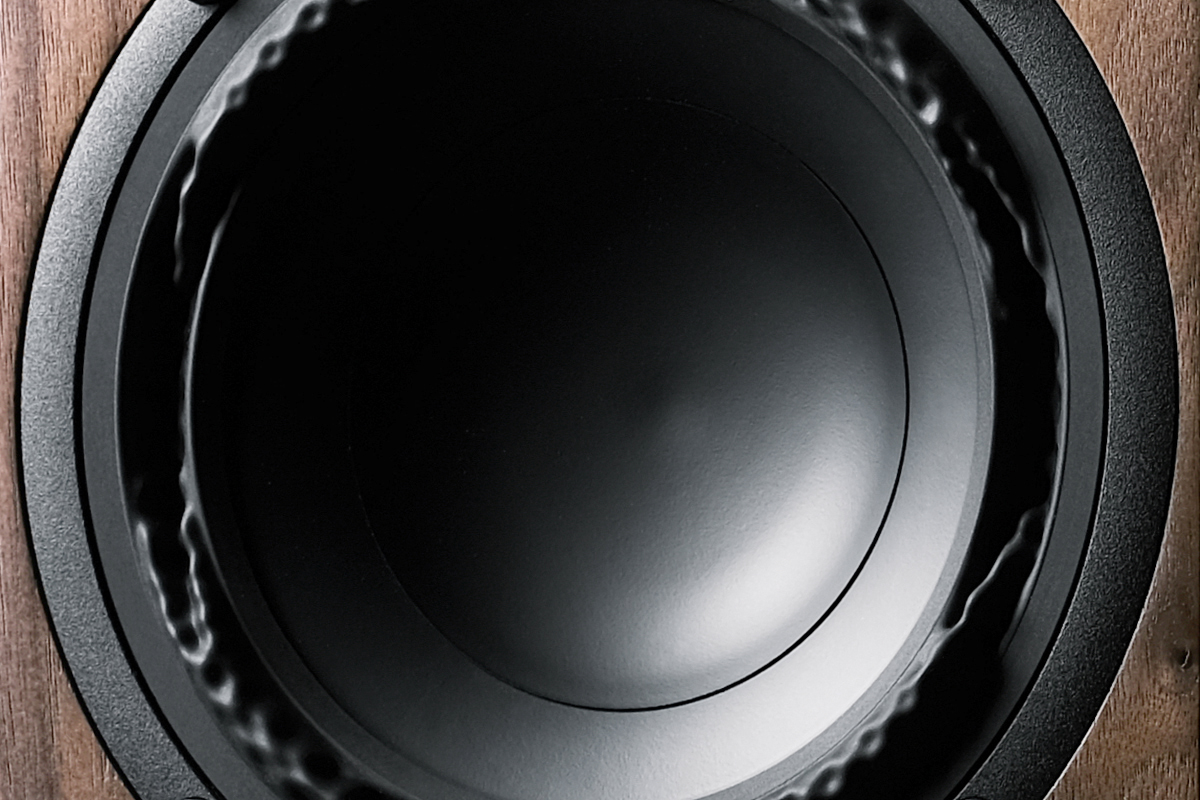 In 2023, Denmark’s Buchardt Audio celebrated its tenth anniversary. To mark the occasion, the company released a new active speaker, the Anniversary 10 (A10), which is the subject of this review. In October 2020, I reviewed Buchardt’s A500 active speaker and was wowed by it. The A500 received a Reviewers’ Choice award and then won a 2020 SoundStage! Network Product of the Year award for Innovation in Design. So when Buchardt Audio announced the A10 last summer, I immediately emailed CEO and founder Mads Buchardt to request a pair for review.
In 2023, Denmark’s Buchardt Audio celebrated its tenth anniversary. To mark the occasion, the company released a new active speaker, the Anniversary 10 (A10), which is the subject of this review. In October 2020, I reviewed Buchardt’s A500 active speaker and was wowed by it. The A500 received a Reviewers’ Choice award and then won a 2020 SoundStage! Network Product of the Year award for Innovation in Design. So when Buchardt Audio announced the A10 last summer, I immediately emailed CEO and founder Mads Buchardt to request a pair for review.
I was eager to review the A10 for several reasons. To my knowledge, it’s the first active speaker to employ Purifi Audio’s PTT6.5W04 6.5″ midrange-woofer, a driver Doug Schneider has been raving about for years. It is also the first Buchardt speaker to be manufactured in Denmark—the company’s previous speakers, including the A500, were all manufactured in China. Buchardt is committed to building all new speakers in Denmark, Mads Buchardt told me. Moreover, whereas Buchardt’s previous models employ MDF enclosures (some with painted finishes, others with veneer), the A10 has a 0.75″ thick solid-wood enclosure. This gives it “an amazing natural look and feel that even the finest veneers in the world can’t match,” Buchardt Audio proclaims on its website. The A10 cabinets are designed to withstand wear and tear and last a lifetime, it assures, and the wood used is all FSC (Forestry Stewardship Council) certified, which guarantees minimal negative impact on the environment and good working conditions for the loggers.
The sample pair Buchardt Audio provided me had the American Walnut finish (€4050/pair; prices in Euros or USD, as indicated). The woodwork was gorgeous, with prominent wood figure that rose vertically on the sides, back, and rear and extended front-to-back on the top and bottom surfaces. The A10 had a striking luxurious presence in that finish, I found, more so than the walnut A500 did. It is also available in Natural Oak (€3900), Charcoal Ash (€3850), Stained Black (€3800), Stained White (€3800), and Natural White (€3800).
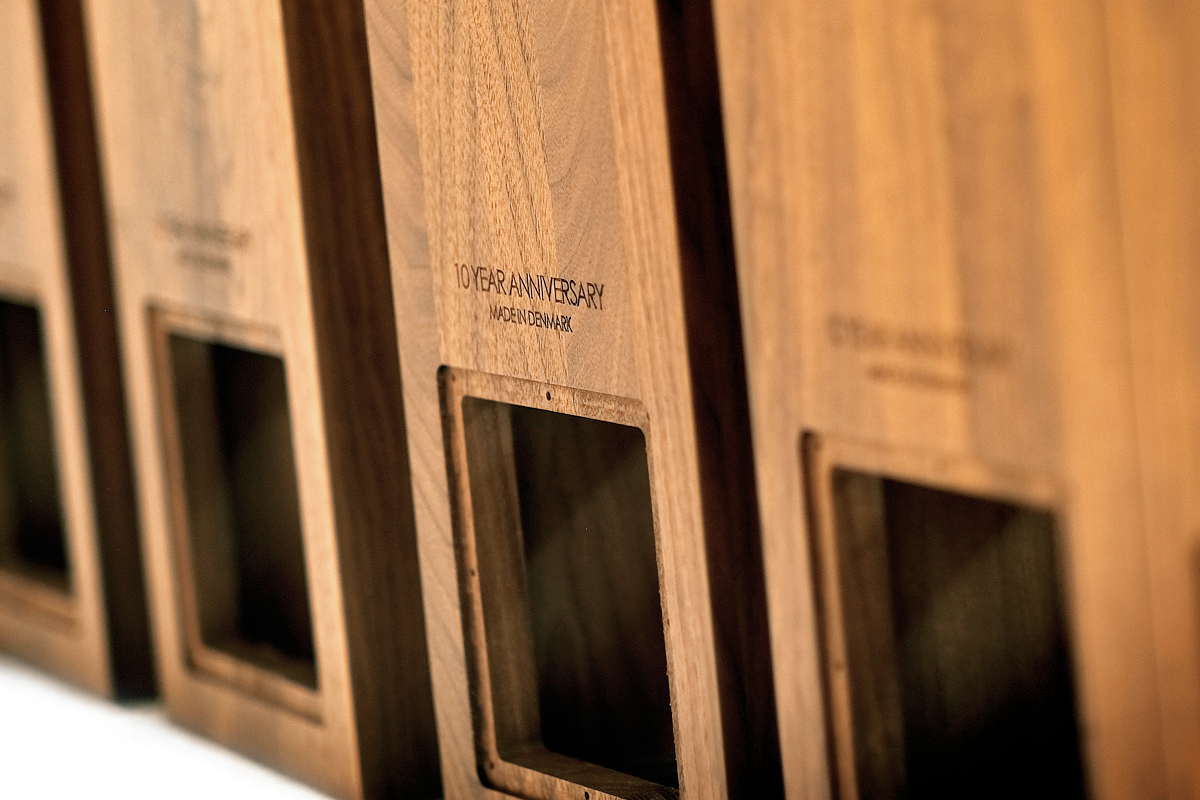
Buchardt Audio sells directly to consumers. All prices include worldwide shipping, import duties, and local sales taxes—there will be no surprises when the courier shows up at your door. The company offers a 45-day audition period, but charges €100 for returns.
Cabinet, drivers, and electronics
The A10 is a two-way sealed design. Complementing its 6.5″ Purifi driver is a 0.74″ aluminum-dome tweeter sourced from Denmark’s SB Acoustics, which also supplied the drivers for the A500. The A10’s tweeter is a new design, based on a different motor structure, with a very high resonant frequency, approximately 30kHz. The result, Buchardt Audio claims on its website, is a tweeter that sounds “effortless, detailed and clear . . . without ever being harsh or sharp.” It sits at the apex of a deep aluminum waveguide designed to match the tweeter’s response and directivity to that of the 6.5″ midrange-woofer at the crossover point.
The Purifi midrange-woofer makes a huge contribution to the A10’s performance, and to its value too, Mads Buchardt wrote to me in a recent email exchange. He called it “the world’s best-performing woofer by a HUGE margin, especially when utilized in two-way designs.” Purifi drivers can “move a lot of air with extremely low THD and without intermodulation distortion,” he added. The A10’s single woofer is nearly as powerful as the A500’s two woofers, and although more expensive, it requires less power and allows for a smaller cabinet, which offset its higher cost. Buchardt Audio can therefore sell the A10 at almost the same price as the A500 even though it’s built in Denmark.
Like all of Buchardt’s active speakers, the A10 incorporates an electronics module sourced from Platin Audio, a division of Hansong Technology in Nanjing, China. This module incorporates a digital signal processor that controls the active crossover and performs other functions, such as equalization and room correction. It also includes two Texas Instruments power DACs: one, rated at 150W, drives the midrange-woofer; the other, rated at 50W, drives the tweeter. Specified frequency response is 28Hz–40kHz (±1.5dB).

Each A10 measures 14.6″H × 7.0″W × 9.6″D and weighs 15 pounds. Two cloth-covered, magnetically attached grilles are included, one fits over the midrange-woofer, the other over the tweeter’s waveguide. Like the A500, the A10’s baffle and rear panel slope backward 5 degrees. This shape is derived from Buchardt’s S400 two-way passive speaker, whose sloped baffle time-aligns output from the midrange-woofer and tweeter. On Buchardt’s active models, time alignment is implemented by the speaker’s digital signal processor. The A500’s and A10’s sloped front and rear panels are an element of aesthetic design.
Each speaker has a balanced analog line-level input (XLR). Analog audio is converted to 24-bit/192kHz PCM audio. The A10’s electronics module also has a WiSA (Wireless Speaker and Audio) radio that can receive digital audio at up to 24/96 resolution from WiSA-equipped source components, such as the Platin Stereo Hub, a network streamer with DSP functions and an app-based room EQ (more on this streamer in a moment), or the Primare Prisma SC15 MKII, a WiSA-capable streaming preamplifier. The A10s can be purchased as a bundle with the Stereo Hub or the Primare Prisma for an additional €300 or €1300, respectively.
On the back of the A10, clustered neatly in a delineated section of its electronics panel, are eight positioning LEDs that indicate which channel the speaker is configured to play. This section also includes a pairing button and an LED that indicates successful WiSA pairing. On previous models, channel assignment was done with the pairing button and positioning LEDs; now it is done through a companion Buchardt app, as I’ll explain in the next section.
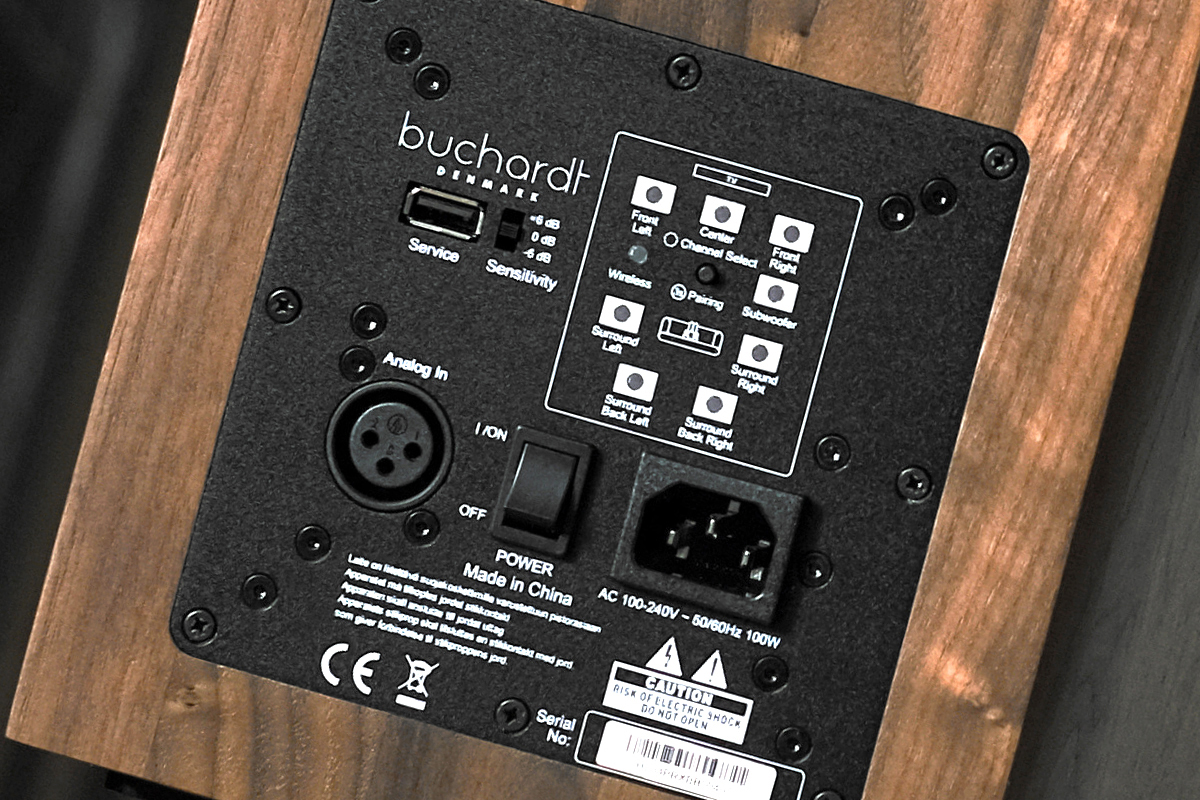
A USB Type-A port on the back of the A10 allows installation of one of several configuration files Buchardt Audio calls “Mastertunings.” Once installed, each such file configures the built-in DSP unit of the A10 for a specific speaker placement or sound preference. At the time of this writing, Buchardt Audio offers nine Mastertunings for the A10, available for download from the company’s website. Among them are Mastertunings that optimize the A10s’ sound when placed near a wall or for nearfield listening, make the sound warmer, enhance detail, make the midrange more forward, and make in-room response less treble-heavy. If you’re combining the A10s with a subwoofer, you can also install a Mastertuning that implements a high-pass filter centered at 60Hz. For most of my listening, I used the stock Flat Mastertuning, which Buchardt characterises as being well-balanced and having a “razor-flat frequency response” and a “deep and wide soundstage, with fantastic stereo image clarity.”
The installation process is straightforward: First download the desired Mastertuning from Buchardt’s downloads site to a FAT32-formatted thumb drive. Then switch off the power, insert the thumb drive, and switch the power back on. When installation is complete, the positioning LEDs flash in a quick circular sweep. Turn the speaker off, remove the thumb drive, and turn it back on again. You’ve now reconfigured the speaker’s DSP. Repeat the process for the other speaker.
The Hub
The Platin Stereo Hub makes for a perfect mate for the A10 and Buchardt’s other active speakers. Measuring 1.6″H × 6.7″W × 3.9″D, this little black box has three optical (TosLink) and one coaxial (RCA) S/PDIF inputs, a USB-B port for connection to a computer, an HDMI-ARC port for connection to an HDTV, a pair of RCA line-level jacks, and a 3.5mm stereo input. The Stereo Hub has no ethernet port, but it has built-in Wi-Fi. The included aluminum remote control, a solid two-way RF device, has the expected functionality: power on/off, source selection, volume control, mute function, and skip/play/pause functions. A nice, unexpected function is input-specific volume locking.
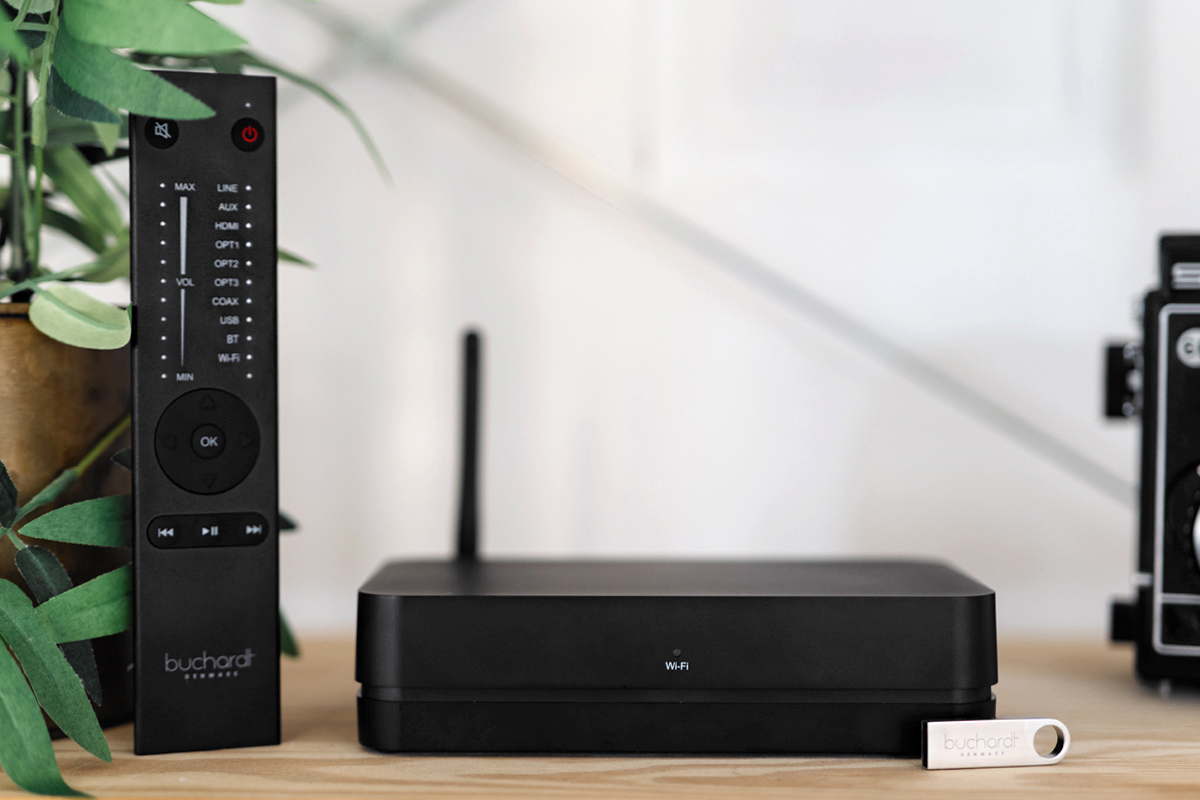
The Stereo Hub supports a wide range of streaming protocols, including Apple AirPlay 2, Google Chromecast, Spotify Connect, and UPnP/DLNA, and it’s Roon Ready.
To enable the Stereo Hub to communicate with the speakers, you first press the pairing button on the back of each speaker for three seconds and then press the pairing button on the Hub. You pair the Hub and remote by holding the pairing button on the Hub down for eight seconds and then press any two buttons on the remote.
You need to connect the Hub to your home network even if you’re not planning to stream. You do this with the Google Home app on an iOS or Android device. After you launch Google Home, the app will find the Stereo Hub and guide you through the setup process. You first confirm the device identified and then select the network it should connect to. Alternatively, iOS users can set up the Stereo Hub as an AirPlay speaker. Chromecast streaming will not be available in this case.
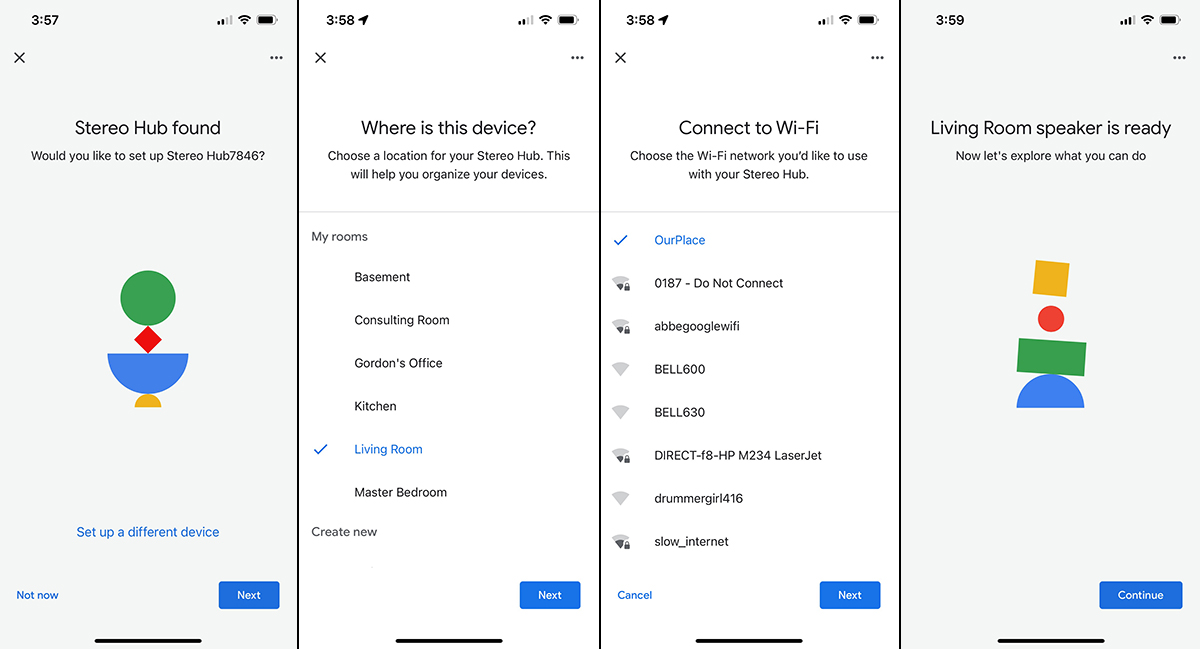
Paired to the speakers and connected to Wi-Fi, the Stereo Hub is now ready for streaming. By default, and regardless of what the positioning LEDs indicate, both speakers will be assigned the left channel. Reassignment of channels can only be done by the WiSA transmitter, either through its remote control or through the Buchardt app (available for iOS and Android). In the home screen of the app, you’ll see an icon showing two speakers, bottom center. Tap it, and a diagram will appear, showing two speaker icons on the left, partly overlying one another. Each of these icons is associated with one of the speakers in the room; tapping it will cause that speaker to play some pink noise. Dragging the icon that corresponds to the speaker on the right side of the room to the right of the screen, assigns the right channel to that speaker. I found the process needlessly fiddly, but it’s a one-time thing. Buchardt has a helpful YouTube video on the setup process.
The Buchardt app also has an EQ function with three presets. Each preset can include a combination of parametric EQ, low- and high-shelving filters, and first- and second-order high-pass filters. The EQ function operates on both channels—you cannot apply different EQ curves to the left and right speakers. I didn’t test this function, but I did try another, a key feature of the app: room correction.
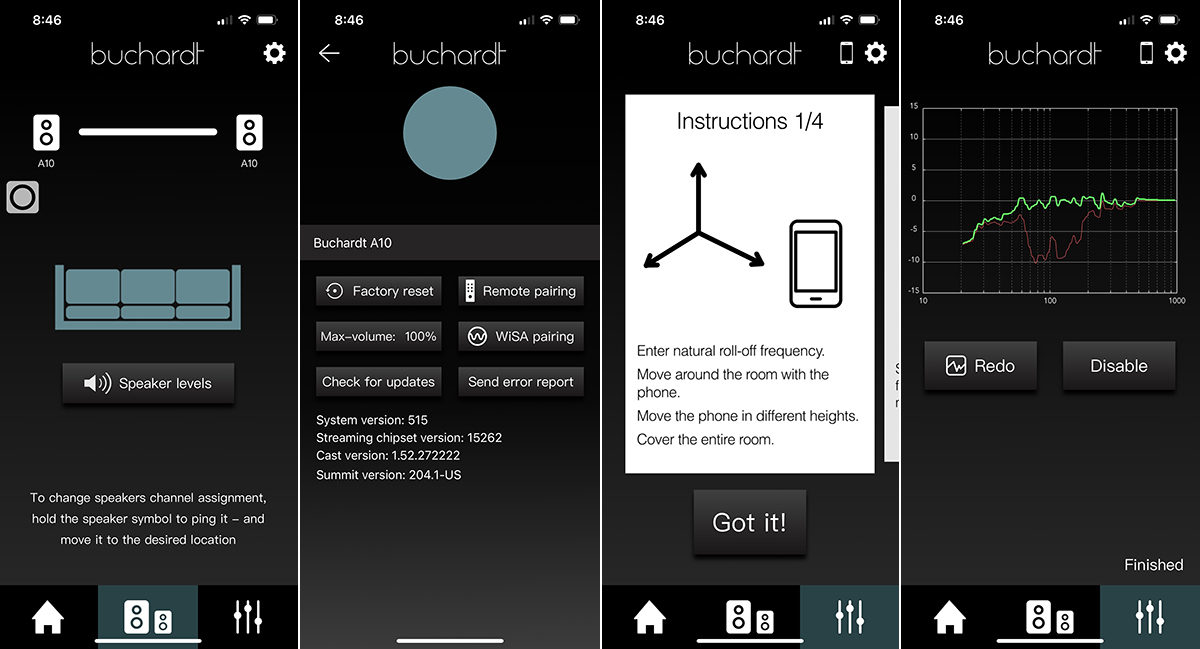
To use this feature, navigate to the Room EQ section of the Buchardt app and then choose Calibrate. You then walk around the room with your smart device in hand while the app plays white noise through the speakers for one minute. The app then analyzes the sound picked up by its microphone (or an external one) and creates a correction curve for the Hub’s DSP. You can enable and disable Room EQ in the Buchardt app. If you’re an iOS user, you can use the built-in microphone on your device for calibration. For Android users, Buchardt offers the Zen wireless microphone (€75 for registered Buchardt customers, €125 for everyone else). I used the built-in microphone on my iPhone 14 to perform calibration.
The measurement process struck me as somewhat haphazard. To ascertain that the calibration process yields consistent results, I ran it again. Reassuringly, the second curve looked almost identical to the first. Both times, the app detected a dip in the 120Hz region that I know is present in my listening room, but it did not detect a peak around 62Hz that is also present. Room EQ is neat. For the most part, I found the effect pleasing.
Listening
I did all my listening for this review in the living room of my 1920s Toronto rowhouse. I placed the A10s on 28″ tall sand-filled speaker stands where my own speakers normally stand, framing the fireplace. There, they were 7′ apart, rear panels 16″ from the wall, baffles 7′ from my listening position on the sofa along the back wall.
I tried the streaming protocols supported by the Stereo Hub—AirPlay 2, Chromecast, Spotify Connect, and UPnP/DLNA—and they all worked flawlessly. For most of my listening, I streamed music through Roon from Qobuz and my local music library, which is stored on a LaCie 2big RAID array connected to an Apple Mac Mini, where I run the Roon Server.
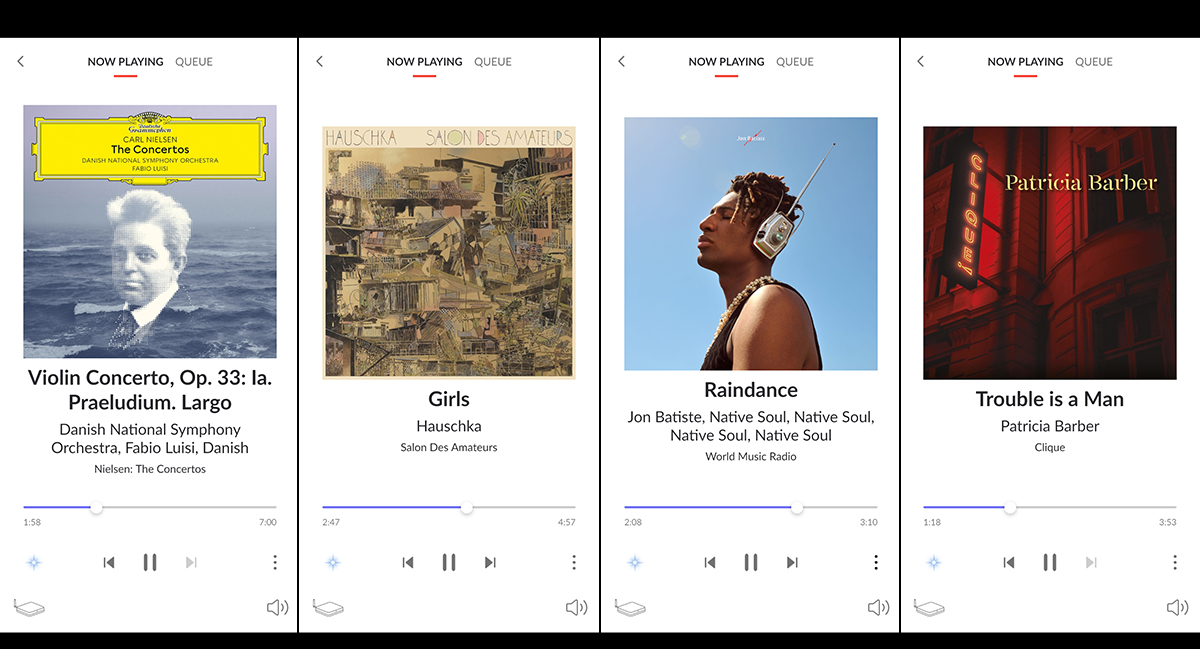
Whenever I review Danish loudspeakers, I make it a point to play an orchestral work by Carl Nielsen, Denmark’s most famous composer. With that in mind, I cued up a recent recording of Nielsen’s only violin concerto, featuring South Korean violinist Bomsori Kim and the Danish National Symphony Orchestra under Fabio Luisi (24-bit/96kHz FLAC, Deutsche Grammophon / Qobuz). I started with the Stereo Hub’s Room EQ turned off.
The prelude opening the first of the two movements begins with a long solo part. I was blown away by the rich tonality of Bomsori’s violin and the gorgeous silvery quality of her high notes. When she bears down on her bow to play dramatic double-stopped notes, I heard plenty of bite and texture but no screechiness. I don’t think I’ve ever heard lovelier, or more convincing, reproduction of a solo violin.
Around the 1:30 mark, the orchestra begins playing a serene theme, while the violin weaves in and out. I was just as impressed by the A10s’ depiction of orchestral textures as I had been with their portrayal of Bomsori’s violin. Instruments were imaged unambiguously on a wide, deep soundstage, with superb front-to-back layering. On the left, the violins had a delectable breathy quality; on the right, the double basses and cellos had captivating textures and a commanding growl. Situated clearly behind the strings, the woodwind and brass instruments were rendered with convincing tonalities.
The second half of the first movement, marked Allegro cavalleresco, allowed the A10s to show off their dynamic capabilities. The big opening chords exploded into my listening room with no hint of congestion or compression or effort. The presentation was powerful, and it was beautifully detailed. I could clearly hear the underlying whisper of bows on strings and the ephemeral resonance of the instruments’ bodies. The transients of pizzicatos were fast but not exaggerated.
When I enabled Room EQ, the double basses and timpani sounded bigger and more substantial, and the orchestral tone was fuller. I really liked the effect Room EQ had on this recording. It enabled these small active speakers to convey the power of a symphony orchestra in full flight.
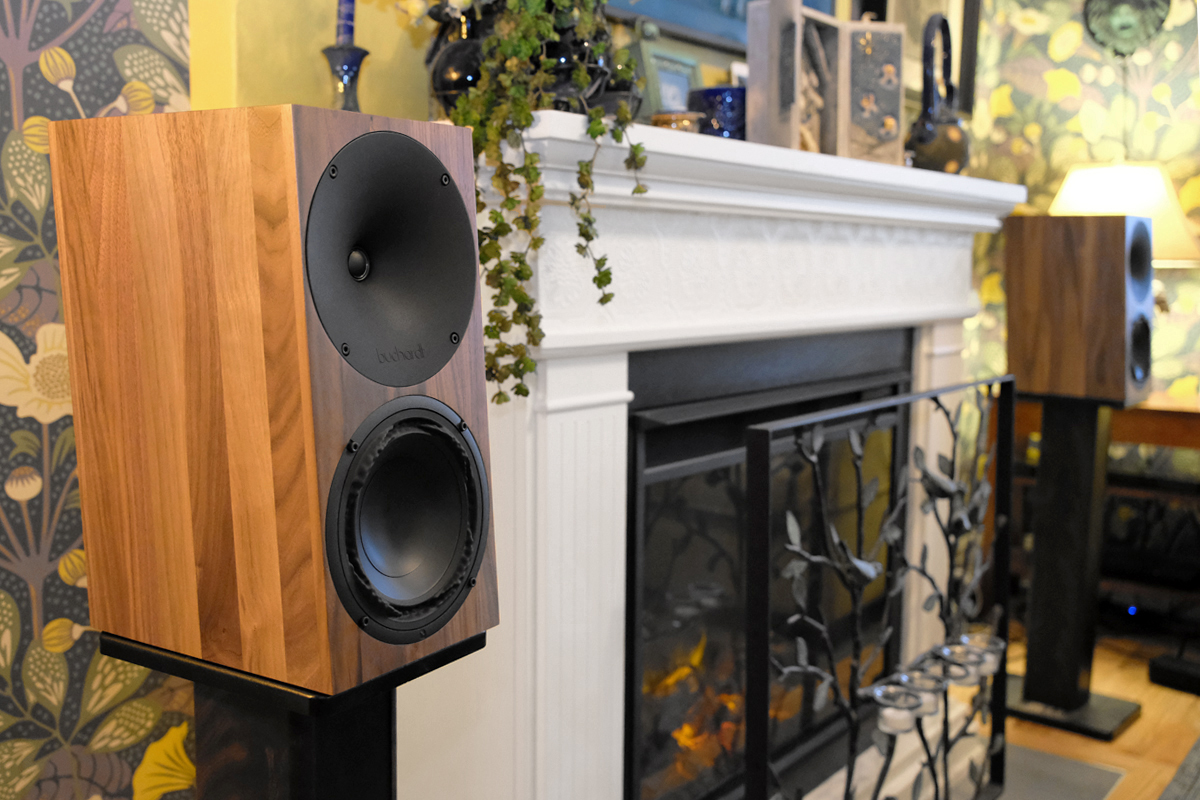
To get a better handle on the low-frequency capabilities of that Purifi woofer, I cued up “Girls” from Salon Des Amateurs, an EDM-inspired album by the German keyboardist/composer Volker Bertelmann, a.k.a. Hauschka (16/44.1 FLAC, 130701/Qobuz). This track features guest appearances by Calexico’s Joey Burns and John Convertino, and classical violinist Hilary Hahn and is propelled along by a thumping kick drum and low-pitched synth notes. With Room EQ disabled, those drumbeats and synth notes were deep and well controlled but didn’t hit quite as hard as I would have liked. With Room EQ enabled, the presentation was transformed, acquiring extra drive and energy.
This is a big, dense number that wants to be played loud, and I happily obliged. The two A10s cast a wide, deep soundstage that extended behind and above the speakers and presented its many elements clearly and without distress: the percussive effects were all over the soundstage, but mostly in the rear; those driving synth notes, in the left rear; Burns’s gently strummed mandolin chords, slightly forward, left of center; Hauschka’s plunked notes on a prepared piano, smack in the middle. Halfway through the track, Hahn plays a plaintive theme on the violin that materialized up front on the right side of the soundstage. Her soaring notes were pure, silvery magic. It was glorious.
Switching to party mode, I then played “Raindance,” the high-energy second track on Jon Batiste’s album World Music Radio (24/48 FLAC, Verve Records / Qobuz). With Room EQ disabled, the funky bass-guitar riff at the start of the song sounded crisp and well defined. The deep synth notes that punctuate much of this track may not have been quite dance-club intense, but they came pretty close—way closer than I would have thought possible given the size of the woofers and enclosures. And they were tight—zero overhang. What astounded me was the size of the soundstage. It was massive: wide, deep, and amazingly high. Clacking drum effects seemed to emerge from the air across the rear, almost four feet above the speakers. Reverb effects and overdubbed vocals appeared in different locations, sometimes a foot or two farther out from center than the speakers were, but Batiste’s voice remained center stage, a good two feet above the speakers. The swirling keyboard notes in the quiet interludes were farther out still.

With Room EQ enabled, that bass-guitar riff that opens the track sounded more robust, more rhythmic, and those synth notes pounded harder, with no loss of definition. Batiste’s voice, especially in the lower register, sounded fuller and better embodied. With Room EQ, the little Buchardts did deliver a dance-club experience. From their appearance, I wouldn’t have thought this possible.
For something more mellow, I next streamed “Trouble Is a Man” from Patricia Barber’s wonderful album of jazz standards Clique (24/176.4 FLAC, Impex Records / Qobuz), starting again with Room EQ disabled. I loved the way the A10s rendered Patrick Mulcahy’s double bass. It sounded taut and tuneful, right down to its lowest notes. I also loved how they preserved Barber’s precise enunciation and revealed the subtlest expressive elements in her singing: a slight rasp on some lower notes, whispery accents at the end of some phrases. Sibilants were a bit hot—that’s the nature of this recording—but with the A10s, unlike with some other speakers, they were smoothly woven into her singing, not layered on top. Barber’s piano was rendered equally well. Timbre was consistent throughout its range, exhibiting crystalline purity in the middle octaves in particular. Barber plays gently on this tender ballad, but the A10s conveyed the power of her instrument.
I also loved the A10s’ rendering of Jon Deitemyer’s drum kit, which was arrayed across the rear of the soundstage. His floor toms had amazing palpability with no hint of bloat or overhang. Cymbals had a wonderful metallic shimmer that rang brilliantly but didn’t splash. The speakers completely disappeared here, leaving this group of supremely talented musicians on a wide, deep soundstage that seemed to extend a few feet behind the speakers.
When I enabled Room EQ, the increased output in the 70Hz–200Hz region made the sound of Deitemyer’s drums and Mulcahy’s double bass bigger and fuller but also less controlled. I liked what I heard—it was pleasing; but it was not high fidelity. Overall, I preferred hearing this track with Room EQ turned off.
Tuning
I wanted to experiment with Mastertunings, but there was no way I’d have the time to try all nine. I consulted Mads Buchardt about this, and he recommended that I try the Nearfield Mastertuning. “It’s much more intense and has a different soundstage projection,” he wrote in an email. “This is my favorite tuning—for far field too.” The other Mastertunings, he explained, change tonality mostly. And if I find the top end too hot, he suggested I try the Flat–In room Mastertuning. It helps with highly reflective rooms.
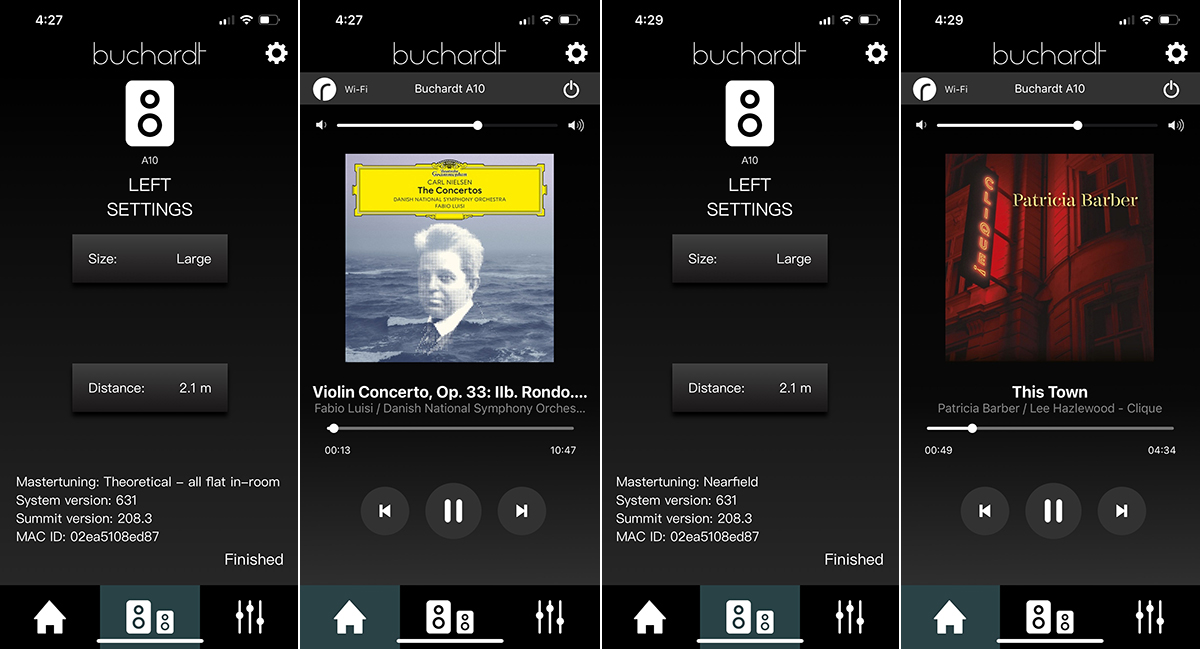
For this part of the audition, I kept Room EQ turned off. I didn’t want the complex room compensation to obscure the effect of the Mastertunings I was about to test. I started with the quirky final movement from Nielsen’s violin concerto, playing it first with the default Flat Mastertuning. This is how this tuning is described on the A10 Mastertunings download page:
This gives a speaker that is very well-balanced and works great overall. It’s a science-based tuning that follows Floyd Toole’s research and philosophy. If you look for a razor-flat frequency response, this one is for you. It gives a good balance of very deep bass and SPL levels. You should hear a deep and wide soundstage with fantastic stereo image clarity and realism that makes you feel like you are in the room with the artist you are listening to. It uses advanced FIIR filter and 4th order crossover slopes on both woofer and tweeter.
Again, I was wowed by the tone of Bomsori’s high notes, the woody richness of her lower notes, the bite and texture in her double-stopped solo passages, the imaging and soundstaging, the transparent orchestral textures, the scale of the presentation, and the effortless dynamics.
Then I switched to the Flat–In room Mastertuning, which Buchardt Audio describes as follows:
This optimizes for a flat estimated in-room response. Our waveguide/tweeter design keeps a constant wide dispersion at higher frequencies, unlike your typical speaker. So despite a flat frequency response, the estimated in-room response when counting for reflected sound is a bit higher than other speakers. This tuning is designed to reduce the treble slightly, so it matches a flat estimated in-room response.
With this Mastertuning, the tone of Bomsori’s violin was slightly mellower, and the overall presentation was a little smoother. Orchestral textures weren’t quite as transparent, but there was a greater sense of scale—the orchestra sounded bigger.
I then reverted to the default Flat Mastertuning and played “This Town” from Patricia Barber’s Clique. Unlike “Trouble Is a Man,” this is a high-energy, up-tempo track, and the A10s reproduced it wonderfully. Patrick Mulcahy’s double bass had loads of snap, but lots of body too. Jon Deitemyer’s drumbeats hit impressively hard.
Next, I installed the Nearfield Mastertuning, which is described as follows:
Nearfield changed multiple parameters to optimize them for the best possible performance for studio use, both for amateurs and professionals. You get exceptional flat on-axis frequency response from 25Hz and up. A soundstage presentation that is a bit more forward, where placing instruments in a 3D space becomes a breeze for mixing and mastering. . . . Despite being designed for nearfield, it’s amazing as farfield as well!
Barber’s voice and piano were now a little more forward, her upper notes more crisply defined. Interestingly, sibilants seemed less pronounced than with the Flat Mastertuning. I also noticed that the soundstage was not as deep as it was with the Flat Mastertuning and the spatial presentation was not as expansive.
While clearly audible, the differences between these three Mastertunings were subtle, and the basic character of the A10 remained unaltered. Mastertunings are fun to experiment with and can be very rewarding.
Comparisons
I compared the A10 with two other pairs of active speakers: Buchardt’s A500 (discontinued, €3500/pair in standard finishes when available), which I paired with a second Platin Stereo Hub, and KEF’s LS60 Wireless system ($4999.99, as of January 19).
The A500 is slightly larger than the A10. It, too, has a 0.74″ waveguided tweeter, but of different, soft-dome design, and front- and rear-mounted 6″ midrange-woofers, each in its own sub-enclosure. Each driver has its own 150W class-D amplifier.
A different set of Mastertunings is offered for the A500, from which I installed the default, Neutral. I returned to the default Flat Mastertuning for the A10. Initially, Room EQ was disabled on both systems.
In Jon Batiste’s “Raindance,” the opening bass-guitar riff sounded a little more robust on the A500s but just a little crisper on the A10s. The deep, pounding synth notes hit harder on the A500s, but the attacks were faster on the A10s. The clacking drum effects were not imaged as precisely with the A500s, and Batiste’s voice had a slight edginess to it that wasn’t there with the A10s, but sibilants were a little more noticeable. Overall, however, the two speakers sounded very similar, as one would expect. Still, I enjoyed this track just a little more through the A10s.
The differences between the A10 and A500 did not change much with Room EQ enabled, except that the A500s exhibited increased output between 60Hz and 300Hz, which added some hangover to those pounding synth notes.
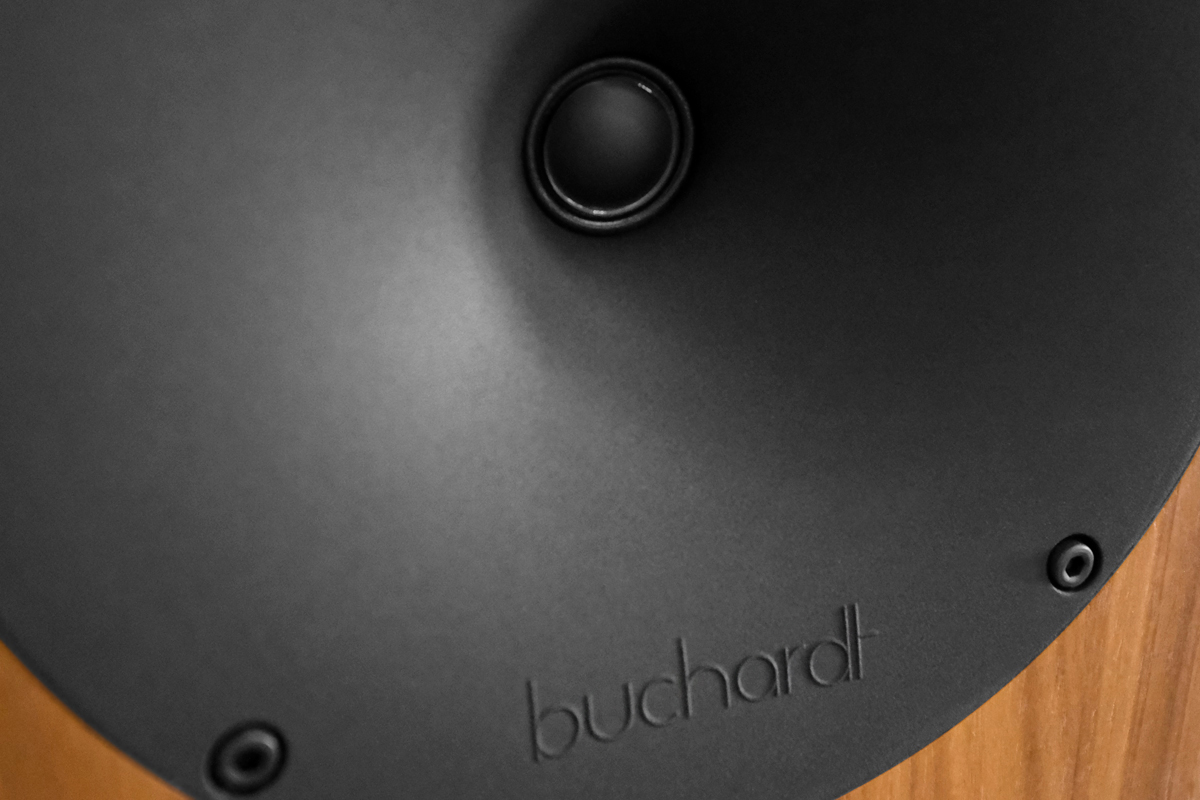
With Room EQ disabled, the tone of Bomsori’s solo violin on the final movement of the Nielsen concerto was a little less silvery, a little woodier, on the A500s. Orchestral textures were a tad more congested too, and front-to-back layering was a little vague compared to the A10s. With Room EQ enabled, orchestral tone was fuller on both systems, but the overall effect of this function on the two systems was different, as it was before. On this recording, the double basses, cellos, and timpani were more pronounced but less defined through the A500s than they were through the A10s.
KEF’s LS60 Wireless loudspeaker system comprises a pair of three-way floorstanders, each with four 5.25″ woofers and 700W of total amplifier power (KEF doesn’t specify whether this is an RMS rating), and it may seem unfair to compare them with the A10s. But at its new price, the LS60 Wireless is now about $500 more than the price of a pair of A10s in a standard finish plus a Stereo Hub, so this comparison is not entirely unreasonable.
I kept the adjustments I’d made in the KEF Connect app (Wall mode on; bass extension set to Extra) and disabled room correction on the Stereo Hub. Starting with “Trouble Is a Man,” I noticed that Barber’s voice was more forward and slightly chesty with the KEFs, and sibilants were not as pronounced compared to the Buchardts. Barber’s piano sounded bigger on the KEFs, more like a concert grand, but attacks were a little more pronounced on the Buchardts. Likewise, the floor toms and double bass sounded fuller and more powerful on the KEFs but more detailed and palpable on the Buchardts. Highs weren’t quite as extended on the KEFs; the cymbals’ shimmer was slightly duller. Generally, and not surprisingly, the KEF system sounded more authoritative. What was surprising was how well the Buchardts fared in this comparison.
Next, I engaged Room EQ. As before, this made Patrick Mulcahy’s double bass and Jon Deitemyer’s floor toms sound fuller and more powerful but also fatter. I then engaged a set of parametric EQ filters (in Roon) that I had created to optimize the KEF system for my listening room. With those filters engaged, the KEFs delivered more texture on Mulcahy’s double bass and more palpability on Deitemyer’s floor toms than the A10s with Room EQ enabled. Bass on the Buchardts seemed a tad bloated by comparison, but that had nothing to do with the speakers; the Stereo Hub’s room correction wasn’t properly compensating for the bass modes in my listening room.
On “Girls” from Hauschka’s Salon Des Amateurs, with my EQ filters on the KEFs and Room EQ on the Buchardts both enabled, the soundstage was slightly higher and deeper with the Buchardts, and the percussive effects more precise. The kick drum and low synth notes sounded as powerful on the Buchardts as they did on the KEFs, but they were much better defined on the KEFs. Again, with the LS60, Roon’s EQ filters were doing a better job compensating for bass modes in my listening room than the Stereo Hub’s Room EQ was doing for the A10s. Hilary Hahn’s violin sounded a little sweeter and more silvery through the Buchardts, a little richer and woodier through the KEFs. In the end, although the KEFs compared favorably to the Buchardts in some ways, this track was equally enjoyable on the two systems.
Conclusion
As should be obvious by now, there is a whole lot to like about the Buchardt A10 active speakers:
- Dynamics were outstanding. These compact active monitors could go from pianissimo to fortissimo in a heartbeat, with no evidence of distress.
- Soundstage was vast—wide, deep, and high—and images had excellent delineation even in dense recordings.
- Bass was surprisingly deep and robust, and highs were sweet and extended.
- Midrange was superb, especially with vocals and solo piano. The Purifi driver’s remarkable performance in the low range clearly extends to the mids.
The few negatives I encountered had more to do with the Platin Stereo Hub and the Buchardt companion app than with the speakers themselves. As I’ve noted, I found the channel assignment process needlessly fiddly, and I’m not 100% sold on the Room EQ function.
In short, Buchardt Audio’s Anniversary 10 active loudspeaker is a stellar performer. Highly recommended.
. . . Gordon Brockhouse
Associated Equipment
- Active loudspeakers: Buchardt A500 with Buchardt Stereo Hub, KEF LS60 Wireless.
- Digital sources and control devices: Apple Mac Mini (early 2020, A1) running Roon 2.0. Apple iPhone 14, Google Pixel 4a 5G, HP Spectre x360 convertible notebook PC.
- Network: Google Wifi four-node mesh network.
Buchardt Audio Anniversary 10 Active Loudspeaker and Platin Stereo Hub WiSA Transmitter
Price: €3800 to €4150 per pair, depending on finish. €300 or €1300 more when bundled with the Platin Stereo Hub or the Primare SC15 MKII streaming preamplifier. Prices include shipping, insurance, and duties, as well as local and state/provincial sales taxes.
Warranty: Five years, parts and labor, on drivers (ten years with registration); two years, parts and labor, on amplifier modules (four years with registration); two years, parts and labor, on the Platin Stereo Hub and Primare SC15 MKII.
Buchardt Audio ApS
Korshoejvej 6, 8600 Silkeborg
Denmark
Phone: +45 26 74 86 80
Website: www.buchardtaudio.com



